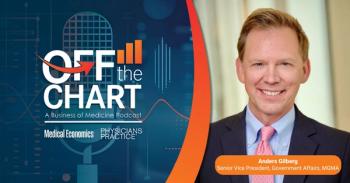
2019 asset protection basics
Physician practice owners should start 2019 by managing these basic risks now.
Asset protection takes many individual forms and ranges from simple to complex, but there are some universal basics. Proactively addressing these core defensive issues now will help protect your assets while you still have the greatest number of predictable, cost-effective options, and a legal right to do so.
Personal insurance
The single most cost-effective asset protection measure every doctor must implement is high limits of a personal liability insurance and an “umbrella” insurance policy of at least one million dollars (but ideally more). This is true whether you own or lease your home and car.
Personal insurance should be implemented with the help of an experienced agent who can explain the features of various polices and available “policy riders” that can be added for an additional cost to extend coverage where needed. Not all polices are created equal and different carriers offer different pricing, options, and, most importantly, different exclusions.
As vital as this layer of protection is, it is not complete or effective on its own, does not address most professional risk related to your practice or other business interests, and works best as part of a holistic system including risk management and fact specific legal tools.
Business insurance
The biggest exposure I routinely see with medical practices around the country is the lack of a well-developed commercial liability insurance “plan.” What I do see is a medical malpractice policy, a general liability insurance policy, and some workers’ compensation coverage. This leaves both the practice itself and its owners and executives personally exposed for a variety of risks that we will cover in detail this year.
Gaps in coverage can be financially fatal and include inadequate specialty insurance in a variety of areas, including data breaches, employment law, regulatory, billing, and director’s and officer’s liability. Small riders on your base liability or medical malpractice polices with shared limits are often inadequate protection from these risks that surprise practice owners when a real claim arises.
Again, working with an experienced, multi-line commercial insurance broker who has access a wide variety of carriers and understands and explains the coverage available is important. This is not an area that should be bought purely on the basis of pricing. Gaps in coverage created by a "cheaper" policy can actually be the most expensive money a physician will ever save, as just the costs of legal defense, outside the cost of any award or loss itself, can easily be six figures.
Disability insurance-All three kinds
Most doctors’ greatest asset is their ability to earn. As with the other insurance referenced above, the specifics of your disability matter and your coverage should be both sufficiently limited to your ability to practice your “own occupation” as you do now and adequate to cover your fixed personal overhead. Coverage
Legal structures
Determining which specific legal structures apply to your unique fact pattern requires individual diagnosis, but there are three general rules that should always be observed.
- Act now; the only time you can legally and effectively move assets into these structures is before you have an exposure. Doing so after the fact will fail and is
typically regarded as fraud .
- Segregate your personal and professional assets so that they are distinct from you and from each other. Owning investment real estate in your own name so that it is exposed to personal and professional liability or having real estate in the same LLC as your medical practice itself are common mistakes that needlessly mix risk across separate assets.
- Properly structure entities with an operating agreement as opposed to just "recording" an LLC, formally fund them with title transfers, have legitimate business purpose, and maintain proper legal formalities, including tax ID numbers and separate bank accounts.
Throughout 2019, we will explore asset protection in a variety of forms in greater detail, including predictable risks, available defenses, and those that continue to evolve, like the growing risk of personal security issues at medial practices. I look forward to your continued success this year.
Attorney Ike Devji has practiced in the areas of asset protection, risk management, and wealth preservation law exclusively for the last 15 years. He helps protect a national client base with over $5 billion in personal assets that includes several thousand physicians and is a contributing author to multiple books for physicians and a frequent medical conference speaker and CME presenter.
Newsletter
Optimize your practice with the Physicians Practice newsletter, offering management pearls, leadership tips, and business strategies tailored for practice administrators and physicians of any specialty.













